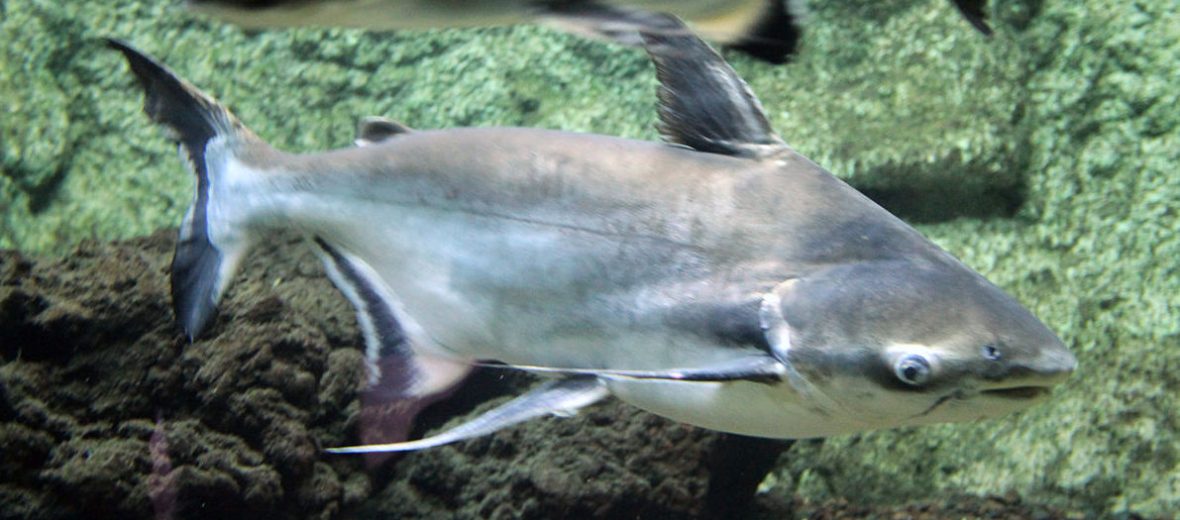
The giant pangasius, aka pangasid-catfish, paroon shark, or Chao Phraya giant catfish, hails from Mekong and Chao Phraya rivers that run throughout Cambodia, China, Lao People’s Democratic Republic, Thailand, and Vietnam. They have also been introduced to central Anatolia, Malaysia, and South Africa. Due to overfishing and overcollection for the pet trade, habitat destruction at the hands of dams, and pollution, these fish are listed as Critically Endangered by the IUCN. Their populations are also decreasing.
First the Stats…
Scientific name: Pangasius sanitwongsei
Weight: Up to 660 lbs.
Length: Up to 9.8 feet
Lifespan: presumed to be up to 10+ years
Now on to the Facts!
1.) These critters are freshwater fish in the shark catfish family.
2.) Their specific name “sanitwongsei” was chosen in honor of M. R. Suwaphan Sanitwong for his support of Thailand fisheries.
3.) Tolerant of poor water quality, these fish prefer to dwell in both fresh and brackish water.
4.) They are migratory. Hence why dam construction has caused a huge decline in the species. With the construction of dams and the Upper Mekong Navigation Improvement Project, their waterways are constricted and they are unable to migrate from brackish to freshwater.
5.) Dusky melanophores pigment their skin and aid in camouflage.
But wait, there’s more on the giant pangasius!
6.) Spawning takes place between April and May.
7.) Females lay upwards of 600 eggs in the muddy waters to prevent them from sticking together.
Did you know…?
In an example of ‘harvesting selection’ or ‘human-driven selection’, these fish have evolved to grow fast and subsequently die fast, as a result of overfishing and over collection.
8.) They prey on crabs, fish, shrimp, and even carrion (dead animals).
9.) These fish are important to fisheries as they can grow to large sizes, even while in captivity, and aid in building an economy that relies heavily on fish and other water species. This lead to the decision to introduce them to rivers in South Africa.
10.) They have also been introduced to Malaysia for both food and as ornamental fish.
But wait, there’s still more on the giant pangasius!
11.) In the aquarium hobby, these fish need a very large enclosure in order to thrive. Providing them with too small of an enclosure results in dwarfism (a stunted growth with a ballooned body shape).
12.) Even though this fish is technically protected and has a high conservation value, as well as being banned from being fished through all seasons, there is little enforcement or legislation towards its protection.
13.) A primary concern in raising these fish in protected fisheries is that there is little diversification and this leads to disease susceptibility and a shorter lifespan due to environmental stresses.
14.) There are some groups in the Asian continent, such as the Asian Species Action Partnership (ASAP), International Union for the Conservation of Nature (IUCN), Species Survival Commission (SSC), and the World Wildlife Fund (WWF), that are trying to protect and conserve these and other species in this region.
Now a Short Giant Pangasius Video!
Be sure to share & comment below! Also, check out the Critter Science YouTube channel. Videos added regularly!
Want to suggest a critter for me to write about? Let me know here.
Some source material acquired from: Wikipedia & IUCN
Photo credit: Citron / CC BY-SA 3.0



